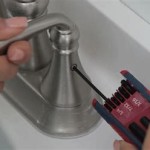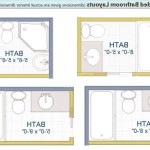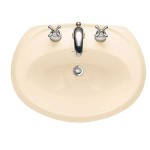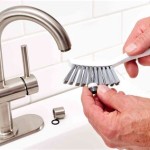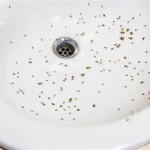How To Tile A Bathroom With Tub: A Comprehensive Guide
Tiling a bathroom, particularly around a tub, presents a significant home improvement project that requires careful planning and execution. It's vital to understand the fundamental principles of tiling to ensure a durable, aesthetically pleasing, and water-resistant finish. This article provides a detailed guide to tiling a bathroom with a tub, covering preparation, installation, and finishing steps.
Key Point 1: Planning and Preparation
Successful tiling begins long before the first tile is laid. Thorough planning and preparation are essential for minimizing errors and ensuring a professional result. This stage involves assessing the existing bathroom conditions, selecting appropriate materials, and meticulously preparing the surfaces to be tiled.
1.1 Assessment of Existing Conditions:
Begin by thoroughly inspecting the current state of the bathroom. This includes evaluating the wall and floor surfaces for any existing damage, such as cracks, mold, or unevenness. Pay close attention to the condition of the substrate (the surface beneath the existing tile or paint), as this will directly impact the adhesion of the new tiles. Check the tub itself for any leaks or damage that needs addressing before tiling. Identify the location of plumbing fixtures (faucets, showerheads, drains) and plan how the tile will be cut and fitted around them. Consider the existing lighting and ventilation in the bathroom, as these factors influence the choice of tile color and material. Poor ventilation can lead to moisture buildup, which can damage the grout and tiles over time.
1.2 Material Selection:
Choosing the right materials is crucial for both the aesthetic appeal and the longevity of the tile installation. Several factors influence material selection, including tile type, size, grout type, thin-set mortar, and sealant.
* Tile Type: Common tile materials include ceramic, porcelain, glass, and natural stone. Ceramic tiles are cost-effective, durable, and suitable for both walls and floors. Porcelain tiles are denser and more water-resistant than ceramic, making them ideal for high-moisture areas like bathrooms. Glass tiles offer a unique aesthetic and are often used for accent walls or backsplashes. Natural stone tiles, such as marble or granite, add a luxurious touch but require more maintenance and can be more susceptible to staining.
* Tile Size: Tile size affects the overall look of the bathroom and the amount of cutting required. Smaller tiles can create intricate patterns but require more grout lines and can be more time-consuming to install. Larger tiles offer a more contemporary look and require fewer grout lines, making them easier to clean. When tiling around a tub, consider the size of the tub and the surrounding space to choose a tile size that is visually balanced and minimizes waste.
* Grout Type: Grout fills the spaces between tiles and provides a water-resistant seal. Common grout types include cement-based grout, epoxy grout, and urethane grout. Cement-based grout is the most common and cost-effective option but can be susceptible to staining and cracking. Epoxy grout is highly water-resistant, stain-resistant, and durable, making it ideal for high-moisture areas. Urethane grout offers similar benefits to epoxy grout but is more flexible and resistant to cracking.
* Thin-Set Mortar: Thin-set mortar (also known as tile adhesive) is used to bond the tiles to the substrate. Choose a thin-set mortar specifically designed for the type of tile being used and the substrate being tiled. There are different types of thin-set mortar, including modified and unmodified. Modified thin-set contains polymers that enhance its adhesion and flexibility, making it suitable for most tile installations. Unmodified thin-set is typically used for natural stone tiles.
* Sealant: A high-quality sealant is essential for protecting the grout and tiles from water damage. Apply sealant to the grout lines after the grout has cured completely. Reapply sealant periodically to maintain its effectiveness.
1.3 Surface Preparation:
Proper surface preparation is critical for ensuring the tiles adhere properly and the installation is watertight. This involves cleaning the surface, leveling any unevenness, and applying a waterproofing membrane.
* Cleaning: Thoroughly clean the surfaces to be tiled, removing any dirt, dust, grease, or mildew. Use a degreaser to remove any oil or grease stains. Rinse the surface thoroughly with clean water and allow it to dry completely.
* Leveling: Level any uneven areas on the walls or floor using a self-leveling compound or patching compound. Ensure the surface is smooth and flat before applying thin-set mortar. Use a level to check for any dips or high spots. Minor imperfections can be corrected with thin-set mortar during installation, but significant unevenness must be addressed before starting.
* Waterproofing: Apply a waterproofing membrane to the walls and floor around the tub to prevent water from seeping through the tile and damaging the substrate. This is especially important in areas that are frequently exposed to water, such as the shower surround. Follow the manufacturer's instructions for applying the waterproofing membrane. Common waterproofing products include liquid membranes, sheet membranes, and sealant tapes.
Key Point 2: Tile Installation
The tile installation process involves applying thin-set mortar, setting the tiles, and ensuring proper alignment and spacing. This stage requires patience, precision, and attention to detail.
2.1 Applying Thin-Set Mortar:
Mix the thin-set mortar according to the manufacturer's instructions. Use a notched trowel to apply the thin-set mortar to the substrate in a thin, even layer. The size of the notches on the trowel will depend on the size and type of tile being used. Hold the trowel at a 45-degree angle and apply the thin-set mortar in one direction, creating ridges. Only apply enough thin-set mortar that you can cover with tiles within 15-20 minutes, as the mortar will begin to dry out.
2.2 Setting the Tiles:
Press each tile firmly into the thin-set mortar, using a slight twisting motion to ensure good adhesion. Use tile spacers to maintain consistent spacing between the tiles. The size of the spacers will depend on the desired grout line width. Regularly check the alignment of the tiles using a level or straight edge. Adjust the tiles as needed to ensure they are straight and even. Use a rubber mallet to gently tap the tiles into place, ensuring they are fully embedded in the thin-set mortar. Wipe away any excess thin-set mortar from the tile surfaces with a damp sponge.
2.3 Cutting Tiles:
Cutting tiles is often necessary to fit them around corners, pipes, and other obstructions. Use a tile cutter or wet saw to cut the tiles to the desired size and shape. For straight cuts, a tile cutter is typically sufficient. For more complex cuts, such as those required for fitting around pipes or curves, a wet saw is recommended. Always wear safety glasses when cutting tiles. Mark the cut line on the tile with a pencil. When using a tile cutter, score the tile along the cut line and then snap the tile along the scored line. When using a wet saw, slowly feed the tile into the blade, following the cut line. Smooth the edges of the cut tiles with a tile file or sandpaper to remove any sharp edges.
2.4 Tiling Around the Tub:
Tiling around the tub requires careful attention to detail to ensure a watertight seal. Start by measuring the distance between the tub and the wall. Cut the tiles to fit this space, leaving a small gap for caulk. Apply a bead of caulk along the top edge of the tub where it meets the wall before tiling. This will help to prevent water from seeping behind the tiles. Set the tiles around the tub, ensuring they are level and aligned with the surrounding tiles. After the thin-set mortar has cured, apply a bead of caulk along the joint between the tub and the tiles to create a watertight seal. Use a caulk smoothing tool to create a smooth, professional finish.
Key Point 3: Grouting and Finishing
Grouting and finishing are the final steps in the tiling process. These steps involve filling the spaces between the tiles with grout, cleaning the tile surfaces, and applying a sealant to protect the grout and tiles.
3.1 Applying Grout:
Remove the tile spacers after the thin-set mortar has cured completely, typically after 24-48 hours. Mix the grout according to the manufacturer's instructions. Use a grout float to apply the grout to the tile surfaces, working it into the spaces between the tiles. Hold the grout float at a 45-degree angle and apply the grout in a diagonal direction, ensuring all the grout lines are completely filled. Remove any excess grout from the tile surfaces with the grout float.
3.2 Cleaning the Tile Surfaces:
After the grout has begun to set, typically after 15-30 minutes, use a damp sponge to clean the tile surfaces. Wring out the sponge frequently and rinse it in clean water. Gently wipe the tile surfaces to remove any grout residue. Be careful not to remove too much grout from the grout lines. Allow the grout to cure completely, typically after 24-72 hours, before applying sealant.
3.3 Applying Sealant:
Apply a high-quality sealant to the grout lines to protect them from water damage and staining. Follow the manufacturer's instructions for applying the sealant. Apply the sealant in a thin, even layer, using a brush or applicator. Allow the sealant to dry completely before using the bathroom. Reapply sealant periodically to maintain its effectiveness.
3.4 Final Touches:
Inspect the tiled surfaces for any imperfections, such as cracked tiles, uneven grout lines, or missing sealant. Repair any imperfections as needed. Clean the tile surfaces one final time with a tile cleaner to remove any remaining residue. Install any accessories, such as towel bars, soap dishes, and shower curtains. Enjoy your newly tiled bathroom with tub.

Diy Tips For Tiling A Tub Surround Twofeetfirst

Bathtub Is It Affordable And Reasonable To Create A Tub Using Tile Home Improvement Stack Exchange

Bathtub Tile Ideas To Kickstart Your Bathroom Design Process

The Complete Guide To Installing Tile On Shower Or Bathtub Walls

Tiling A Bathtub Panel 4 Steps With Pictures Instructables

How To Tile Bathroom Shower Tub Surround And Niche A Z

How To Tile Around A Jacuzzi Tub The Handyman S Daughter

7 Easy Steps On How To Install Tile In A Bathtub Rubi Blog Usa

Bathroom Tub Surround Tile Subway More The

Tile Setting How To Set Around Your Tub
Related Posts
